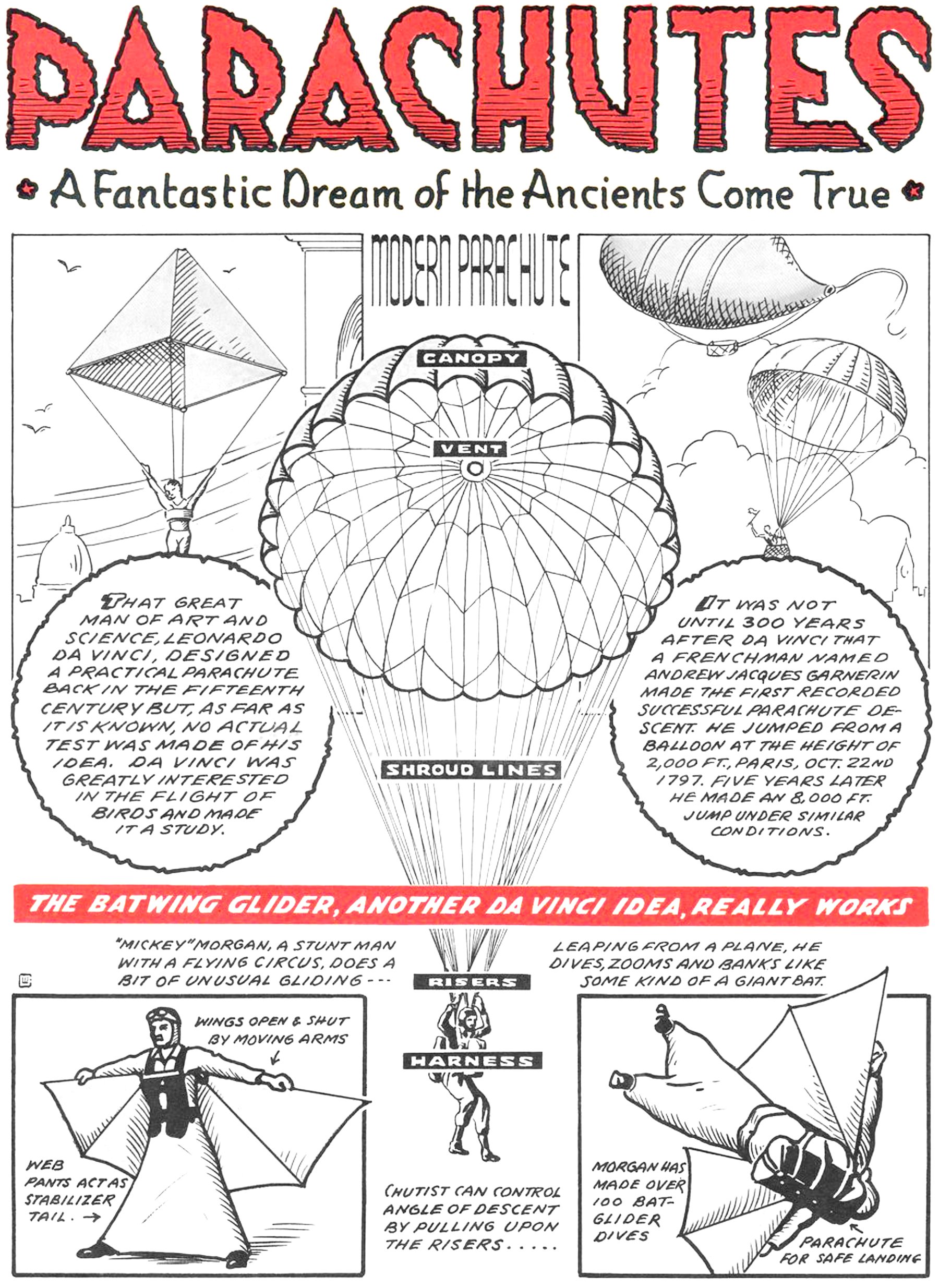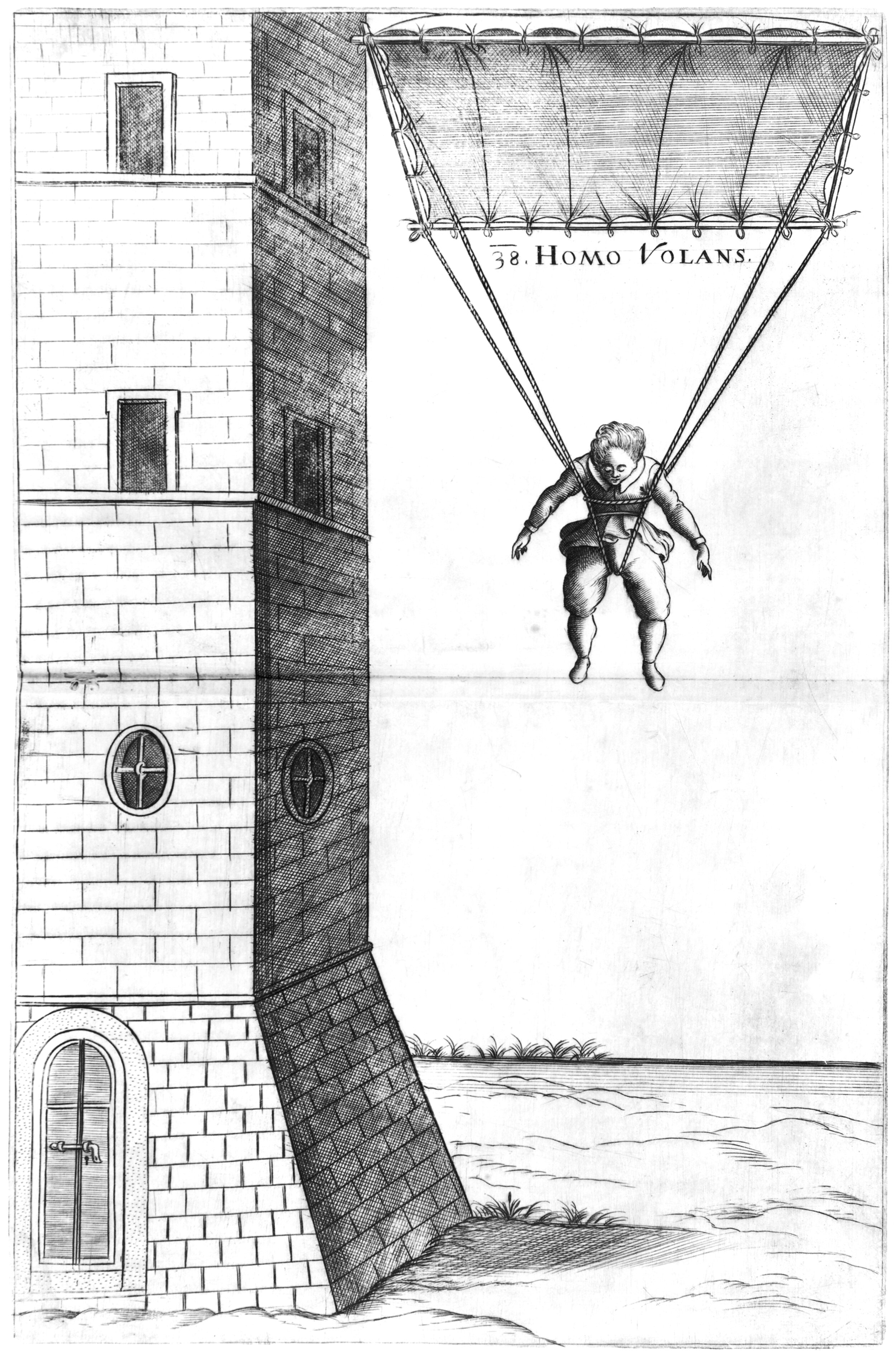Welcome to On Verticality. This blog explores the innate human need to escape the surface of the earth, and our struggles to do so throughout history. If you’re new here, a good place to start is the Theory of Verticality section or the Introduction to Verticality. If you want to receive updates on what’s new with the blog, you can use the Subscribe page to sign up. Thanks for visiting!
Click to filter posts by the three main subjects for the blog : Architecture, Flight and Mountains.

Parachutes : A Fantastic Dream of the Ancients Come True
Pictured above is a page from a War Heroes comic book from 1943. It features a few examples of parachutes and a flying suit called the Batwing Glider. At the center of the page is a modern parachute, complete with its canopy, vent, shroud lines, risers and harness. Flanking this drawing are two historical examples of parachutes. The first is a sketch from Leonardo da Vinci’s notebooks circa 1495, and the second is the world’s first successful parachute descent by André-Jacques Garnerin in 1797. This triad presents a concise, albeit incomplete history of parachute design, but it does do a good job of visually connecting a modern parachute to its ancestors.

Sébastien Lenormand’s First Parachuting Attempt
Pictured above is a French illustration from 1890, showing Louis-Sébastien Lenormand leaping from a building with his parachute in Montpellier, France in 1783. He jumped from the Montpellier Observatory in front of a large crowd of onlookers who were hoping to witness the first-ever successful parachute demonstration. The caption reads Sébastien Lenormand Fait la 1re Expérience du Parachute, which means Sébastien Lenormand’s First Parachuting Attempt.

Franz Reichelt’s Fatal Leap from the Eiffel Tower
Pictured above is an illustration showing Franz Reichelt, a French tailor and inventor who was an early pioneer of parachuting. He had developed a wearable suit for pilots that would expand into a parachute should they need to eject themselves from their aircraft. He tested the design from the first deck of the Eiffel Tower in 1912, falling to his death after the parachute failed to open properly.

How to Fall : An Early History of the Parachute
Throughout the history of human flight attempts, the number one cause of death and injury has been a fall from a high place. In the early days of flight attempts, most examples involved jumping from a high perch and trying to stay in the aloft for as long as possible. Alongside these attempts at flight, others were concerned with the art of falling. How could a person leap from a high place and return to the surface safely? The resulting paths of thought make up the early history of the parachute.
